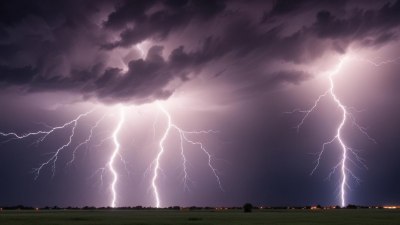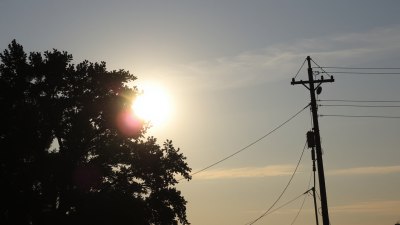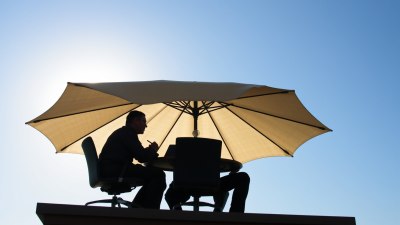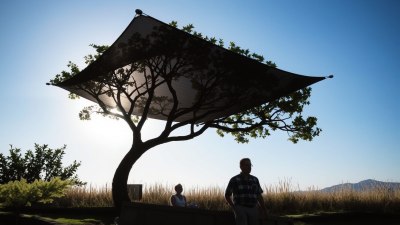How Lightning Can Strike the Same Place Twice
Discover the science behind lightning strikes and why some places are hit repeatedly.

This image was created with the assistance of Freepik
Lightning is one of nature's most awe-inspiring phenomena, a stunning display of power and electricity that captivates and terrifies. The common belief that lightning never strikes the same place twice is a myth. In fact, there are numerous instances where lightning has struck the same location multiple times, and scientific principles explain why this occurs. Understanding the factors that lead to repeated lightning strikes can help us not only appreciate the forces of nature but also improve safety measures. In this article, we will explore the reasons behind lightning strikes and why some places are struck repeatedly.
The Basics of Lightning
Lightning is caused by the discharge of electricity in the atmosphere. This discharge occurs when there is a buildup of charged particles within a cloud or between clouds and the ground. The process begins with the formation of a thunderstorm, where rising warm air carries moisture upward. As this moisture condenses into water droplets and ice particles, they collide, generating a separation of charges. The upper parts of the cloud generally become positively charged, while the bottom becomes negatively charged.
As the electric field grows stronger, it can eventually overcome the resistance of the air, resulting in a rapid release of energy—this is lightning. The flash of light that we see is the result of extremely heated air expanding rapidly, creating a shockwave that we perceive as thunder. The average temperature of a lightning bolt can reach around 30,000 degrees Fahrenheit, which is roughly five times hotter than the surface of the sun.
Why Does Lightning Strike the Same Place?
Lightning tends to strike tall structures more frequently than low-lying areas due to a principle known as “ground discharge.” Objects that are tall or protrude into the storm clouds can create a pathway for the electrical discharge to travel. This means that locations such as skyscrapers, communication towers, and wind turbines are prime candidates for lightning strikes. For example, the Empire State Building is struck by lightning approximately 20 to 25 times a year.
The Factors Influencing Lightning Strikes
Several factors influence the frequency and intensity of lightning strikes to specific locations. One of the most significant factors is the height of the object. The taller the object, the more likely it is to provide a pathway for lightning to discharge. Additionally, the conductivity of the object’s material plays a role. Metal structures, due to their conductivity, are more susceptible to lightning strikes than wooden or non-conductive structures.
The geographical location is also critical. Areas that experience frequent thunderstorms, like Florida, have a higher occurrence of lightning strikes. Certain topographical elements, such as mountains or tall trees, can create localized versions of thunderstorms, leading to a higher incidence of repeated strikes. Urban environments with tall buildings concentrated in one area often see multiple lightning strikes to the same buildings due to their enhanced height and electrical conductivity.
Real-World Examples
One of the most notable examples of lightning striking the same place multiple times is the Willis Tower (formerly known as Sears Tower) in Chicago. This iconic skyscraper has experienced thousands of lightning strikes since its completion in 1973, thanks to its towering height and metal spire. Similarly, the CN Tower in Toronto, Canada is another example of a structure that attracts repeated lightning strikes, due to its height and location in a thunderstorm-prone area.
In addition to tall structures, natural features such as trees can also be struck multiple times. The tallest trees in a forest are often the first to attract lightning. An example can be found in California's ancient redwood forests, where certain trees have been struck by lightning multiple times throughout their long lives.
Statistical Insights on Lightning Strikes
According to the National Weather Service, the average lifetime probability of a person being struck by lightning is about 1 in 15,300. However, certain areas witness a higher frequency of lightning strikes. Florida, for instance, records more lightning strikes per square mile than any other state in the U.S. The state experiences an average of 1.45 million lightning strikes annually due to its tropical climate, which fosters frequent thunderstorm activity.
Research has shown that lightning can strike a single location upwards of 20 times in a single storm event. This possibility contributes to structures being built with lightning protection systems that can help channel the electrical discharge safely into the ground, mitigating damage and risk.
Lightning Safety Measures
Understanding the propensity for lightning strikes in certain locations helps to inform safety measures. Individuals should always seek shelter indoors when thunder roars or lightning is visible. Staying away from tall structures, water bodies, and open fields during thunderstorms significantly reduces the risk of being struck by lightning.
The Science of Lightning Prevention
To protect structures from repeated lightning strikes, many buildings are equipped with lightning rods. These rods act as a conductive pathway that allows electricity to be directed harmlessly into the ground. The use of a lightning rod can significantly reduce the likelihood of fire and structural damage when a lightning strike occurs. This technology has a long history, dating back to Benjamin Franklin, who developed the first lightning rod in the 18th century.
Community Preparedness and Awareness
Beyond individual safety measures, communities prone to thunderstorms must promote awareness and preparedness against lightning strikes. Educational programs informing residents about the dangers of lightning and the need for effective emergency plans can save lives. Urban planners should also consider lightning risk in building design and land-use decisions, incorporating lightning protection systems in tall structures to enhance public safety.
Lightning striking the same place multiple times is a natural occurrence influenced by various environmental factors, including the height and material of structures, geographical location, and thunderstorms' frequency. Understanding these principles not only demystifies this fascinating climatic phenomenon but also emphasizes the importance of safety and preparedness against the dangers it poses. As science continues to advance our understanding of meteorology, we can better equip ourselves to face such electrifying forces of nature.











